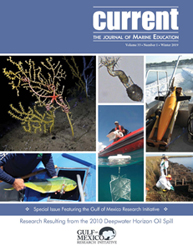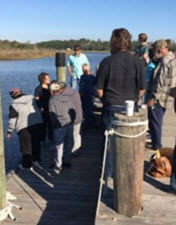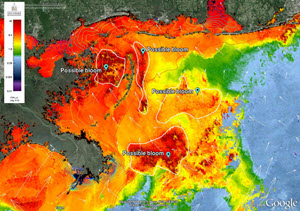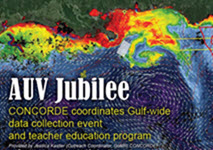CONCORDE
Education and outreach products generated by the Consortium for Oil Spill Exposure Pathways in Coastal River-Dominated Ecosystems (CONCORDE).
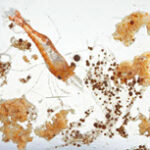
The Smithsonian’s Ocean Portal published an article that describes how scientists are using the In Situ Ichthyoplankton Imaging System (ISIIS) to photograph zooplankton organisms and gather information about salinity, temperature, dissolved oxygen, and light levels. The detailed imagery that the ISIIS collects is helping researchers understand how incidents such as Deepwater Horizon may affect the Read More
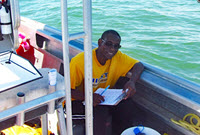
Oil spill material that enters the water column may adhere to resuspended seafloor sediments and be transported to other areas. Stephan O’Brien is investigating how physical factors, such as wind and waves, affect the suspension and subsequent transport of sediments in the Mississippi Sound and Bight. “Inorganic matter such as sediment is one of the Read More
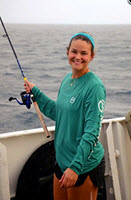
Responders to the 2010 Deepwater Horizon incident sought to reduce the amount of shoreline oiling by diverting an increased amount of Mississippi River outflow into the Gulf of Mexico. The Army Corps of Engineers opened the Bonnet Carré Spillway in 2016, which diverted Mississippi River water into the Mississippi Sound, to relieve pressure on the Read More

Dr. Brian Dzwonkowski released drifters at the mouth of Mobile Bay. Graduate student Jeff Coogan animated the drifters’ path, which captured a low-wind, high-discharge event. You can watch the video here. CONCORDE Oceanography Research Page CONCORDE Website
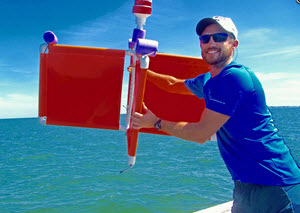
When Deepwater Horizon oil approached coastal environments, it was unclear how river water entering the Gulf of Mexico would affect the oil’s transport and fate. Steve Dykstra uses drifters and ship-deployed sensors to study how freshwater plumes disperse in the coastal environment over different seafloor topography. He plans to someday use his findings and experience Read More
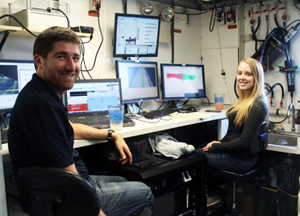
Oil droplets can attach to tiny sediment particles suspended in the water column, causing them to sink to the seafloor where they can linger for a long time. Sediment grain size influences if and how oil droplets are resuspended into the water column. Larger particles sink faster and are more difficult to resuspend in the Read More
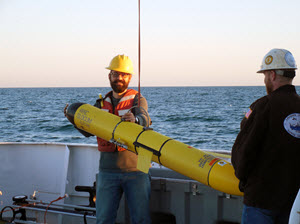
Microscopic organisms called plankton, an important component of the marine food web, congregate in the freshwater-laden coastal waters of the northern Gulf of Mexico. Adam Boyette wants to learn more about how and where these plankton live to better understand how an oil spill or other disaster might impact their populations. He is collaborating with Read More

Two postdocs, Ali Deary and Adam Greer, took turns as Chief Scientist aboard the R/V Point Sur during the Consortium for oil spill exposure pathways in Coastal River-Dominated Ecosystems (CONCORDE)’s recent Spring Campaign, while three others—Kemal Cambazoglu, Sabrina Parra, and Inia Soto-Ramos—devised the cruise plan for the R/V Pelican. Earlier in the year PhD student Read More

The short clip tracks the paths of drifters released during a research event in the Mobile Bay area as part of the Consortium for oil spill exposure pathways in Coastal River-Dominated Ecosystems (CONCORDE)’s Spring Research Campaign. See below for video to learn more about the drifter deployment. This animation was created by Jeff Coogan who works Read More
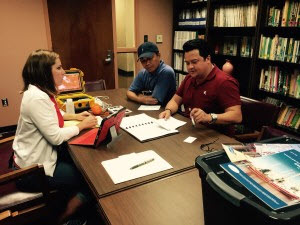
While Consortium for oil spill exposure pathways in Coastal River-Dominated Ecosystems (CONCORDE) researchers sampled the northern Gulf to determine the paths and impacts of river outflow, a pair of citizen scientists, also commercial fishers, assisted from their own vessels. Hoang Nguyen Van of D’Iberville, Mississippi, and George Barisich of Ycloskey, Louisiana—Captain Nguyen and Captain George—took Read More

